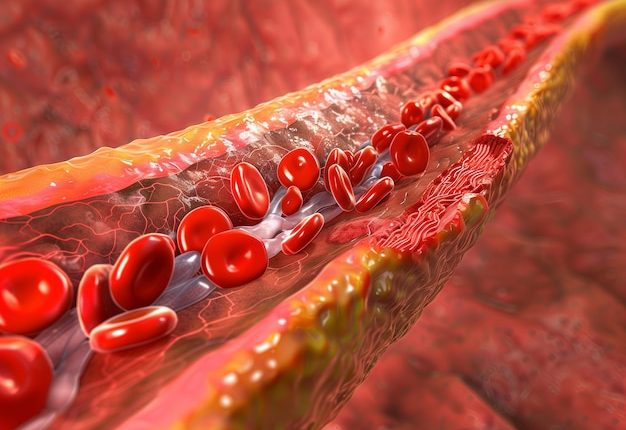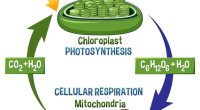In a groundbreaking study shedding light on why elderly individuals are more susceptible to cardiovascular diseases, a team of researchers has unveiled a new pathway through which blood platelets are produced as people age. Led by Donna M. Poscablo and her team, the research published in a recent study explains how hematopoietic stem cells—the cells responsible for producing blood and immune cells—develop into platelets through a distinct pathway that becomes more prevalent with age. This discovery is crucial as it highlights how these aging-enriched platelets differ from those produced through the conventional pathway known to medical science.
The study reveals that as we age, not only does the number of platelets increase—a condition known as thrombocytosis—but these platelets also become hyper-reactive, thereby exacerbating the risk of thrombosis, the formation of harmful blood clots. Unlike other blood cells, the production of these particular platelets is not linked with the rest of the hematopoietic lineage, such as red blood cells. The findings suggest that aging itself triggers a mechanism within stem cells that leads to an increased and altered platelet formation, contributing significantly to cardiovascular complications in the elderly. This research holds profound implications for developing targeted treatments to combat age-related increases in heart disease and stroke risk.
Understanding blood cell production in the context of aging is a pressing issue given the rising global prevalence of cardiovascular diseases, which remain the leading cause of death worldwide. The study led by Donna M. Poscablo provides significant insights into the mechanisms behind increased cardiovascular risks in the elderly by focusing on hematopoietic stem cells (HSCs) and their role in platelet production. HSCs are vital for the maintenance and renewal of blood cells throughout an individual’s life. However, this study reveals a critical shift in the function of these cells with advancing age.
Historically, research has shown that HSCs slowly change their behavior and function over time, leading to alterations in the types and functionalities of blood cells they produce. An area of particular interest has been the aging process’s impact on the immune system, widely studied for its gradual decline in older adults—a phenomenon known as immunosenescence. However, the specific effects of aging on platelet production and function have remained less understood until now.
Platelets play a central role in hemostasis and thrombosis; they circulate in the blood and act as first responders to any vascular injury, clumping together to form clots to stop bleeding. While essential for preventing blood loss following injury, hyper-reactive or excessive platelets can lead to the development of thrombosis—blood clots that can be dangerous and potentially fatal if they block critical blood vessels leading to organs like the heart and brain.
In the exploration of thrombocytosis (an overproduction of platelets) with age, the Poscablo team’s research marks a crucial advancement. The study delineates a novel pathway through which hematopoietic stem cells begin to produce platelets more actively and differently as individuals age. This alternative pathway results in the production of “aging-enriched” platelets, which differ both in quantity and behavior from those generated through the traditional pathway known in younger tissues.
The discovery of this aging-specific platelet production pathway helps to explain not just an increase in platelet counts commonly observed in older adults but also the altered characteristics of these platelets that contribute to a heightened risk of cardiovascular complications. This distinction is pivotal, as cardiovascular diseases can be triggered by thrombotic events arising from hyper-reactive platelets.
The implications of these findings are vast. They not only enhance our understanding of hematopoiesis in the context of aging but also pave the way for new therapeutic approaches. By targeting the unique pathway responsible for producing these aging-enriched platelets, it might be possible to develop treatments that mitigate the elevated thrombotic risk associated with aging. This targeted strategy could dramatically improve the health outcomes of the elderly population by curbing the incidence and impact of heart attacks and strokes, which are profoundly influenced by the behavior of platelets within the circulatory system.
Furthermore, this research adds a new dimension to our understanding of age-related changes in stem cell biology and their systemic effects, reinforcing the importance of stem cell research in devising interventions for age-associated diseases. Through studies like that of Poscablo and her team, the medical community continues to unravel the complex biological changes that accompany aging, offering hope for enhanced and more specific medical interventions that can significantly improve the quality of life for elderly individuals.
To uncover the distinct pathways through which hematopoietic stem cells (HSCs) produce platelets as individuals age, the team led by Donna M. Poscablo employed a combination of advanced scientific techniques that spanned genetic, cellular, and molecular methodologies. This comprehensive approach enabled a deeper understanding of the changes in cell behavior and function in the aging population.
### 1. Isolation and Cultivation of HSCs
The first step involved the isolation of hematopoietic stem cells from bone marrow samples, which were collected from individuals across different age groups. This comparative approach allowed the team to directly observe variations in HSC behavior based on age. The cells were cultivated under controlled conditions to ensure their viability and to facilitate detailed observation of their development into various blood cell types, including platelets.
### 2. Tracking and Tracing Cell Lineage
To map out the specific pathway through which the aging-enriched platelets were produced, the research team used lineage tracing techniques. These techniques involve marking specific cells with traceable genetic labels that can be monitored throughout the cell division process. By applying this method, the researchers were able to follow the progeny of the HSCs as they developed, pinpointing when and how the differentiation deviated into the novel platelet production pathway.
### 3. Genomic Analysis
To ascertain the genetic underpinnings that drive the shift in platelet production, genomic sequencing was conducted on both traditional and aging-enriched platelets. High-throughput sequencing technologies provided insights into the genetic expression profiles of different groups of platelets, identifying particular genes that were activated or suppressed during the aging process.
### 4. Proteomic and Functional Assays
Complementing genomic analysis, proteomic studies were performed to analyze the proteins expressed by the aging-enriched platelets. These studies helped to clarify the functional changes in the platelets that contributed to their hyper-reactivity. Additionally, various functional assays were used to assess how these platelets responded to vascular injury, including their clotting efficiency and reaction to blood vessel wall damage.
### 5. Animal Models
To further validate their findings, the researchers employed animal models. Transgenic mice, engineered to mimic the aging-related hematopoietic pathways observed in humans, were used to study the effects of aging-enriched platelets on cardiovascular health. This step was crucial for observing the potential for thrombosis and other vascular complications in a controlled but biologically relevant system.
### 6. Data Analysis and Computational Modelling
Finally, extensive data analysis and computational modeling were essential components of the research. These methods allowed the team to integrate and interpret the vast amounts of data collected, providing a comprehensive model of how HSCs change their behavior with age and the implications of these changes for platelet production and function.
Through this meticulous methodology, Donna M. Poscablo and her team were able to demonstrate not only the existence of an alternative pathway for platelet production in aged individuals but also how these platelets contribute to increased cardiovascular risks. This research paves the way for potential therapeutics targeted at mitigating these risks associated with aging.
The key findings of the study by Donna M. Poscablo and her team centered on the novel discovery of an alternative pathway for platelet production in aged individuals, which contributed to a better understanding of the increased cardiovascular risks associated with aging. Here are the principal results and their implications:
### 1. Identification of a Distinct Platelet Production Pathway:
One of the most significant results was the identification of a previously unknown pathway through which hematopoietic stem cells (HSCs) start producing what the research team termed “aging-enriched platelets.” Unlike traditional platelet production, which remains fairly consistent throughout life in terms of process and outcome, this new pathway varies significantly, leading to platelets that are both more numerous and functionally different—that is, more hyper-reactive. These aging-enriched platelets have molecular and cellular characteristics distinct from their younger counterparts, including unique protein markers and gene expression profiles.
### 2. Increased Thrombotic Risk:
The study demonstrated that the hyper-reactivity of aging-enriched platelets significantly contributes to an increased risk of thrombosis. Experiments utilizing both in vitro and transgenic mouse models showed that these platelets are more prone to clumping and forming clots under conditions that typically would not be as severe a trigger in younger settings. This heightened proneness to coagulation underscores a direct linkage between the novel pathway of platelet production and elevated incidences of cardiovascular events such as strokes and heart attacks in the elderly.
### 3. The Role of Genetic Factors:
Through genomic analysis, the researchers identified specific genes that are differentially expressed in aging-enriched platelets compared to traditional platelets. Some of these genes are known to be involved in cell signaling pathways that regulate platelet activation and aggregation. The altered expression of these genes suggests a genetic basis for the changes in platelet behavior with age, offering potential targets for therapeutic intervention.
### 4. Potential for Targeted Therapies:
Perhaps the most promising aspect of the findings is the potential for developing targeted therapies. By understanding the specific cellular and molecular mechanisms that underlie the production of aging-enriched platelets, medical researchers can develop drugs or genetic therapies aimed at modulating these pathways. Such targeted treatments could decrease the production or reactivity of these platelets, mitigating the increased thrombotic risk and thereby potentially reducing the prevalence of age-related cardiovascular diseases.
### 5. Broader Implications for Stem Cell Research and Aging:
The study not only sheds light on the specifics of platelet production and function but also provides broader insights into how stem cells change with age. These insights are crucial for the field of regenerative medicine and for developing strategies to combat various age-related conditions, not just those pertaining to cardiovascular health.
In sum, the research conducted by Donna M. Poscablo’s team has opened up new vistas in our understanding of how aging impacts blood cell production and function. The discovery of an alternative pathway for platelet production in the elderly provides a tangible link between aging and enhanced risk for cardiovascular diseases, offering new angles for therapeutic intervention to enhance health outcomes as populations continue to age globally.
The groundbreaking findings from Donna M. Poscablo and her team present a significant advancement in our understanding of hematopoiesis in aging and pave the way for revolutionary approaches in addressing age-related cardiovascular diseases. While the discovery of the aging-enriched platelet production pathway marks a milestone, it also sets the stage for a spectrum of future research directions that can further harness these insights to create impactful therapeutic solutions.
### Future Research Directions
#### 1. **Expanding the Scope of Genetic and Molecular Studies:**
Future studies could expand on the genetic and molecular profiling of aging-enriched platelets. Identifying additional genes and signaling pathways that contribute to altered platelet behavior could lead to more comprehensive therapeutic targets. It would also be valuable to explore the interaction between these targeted genes and other age-related genetic changes to understand their combined effect on cardiovascular health.
#### 2. **Longitudinal Studies in Human Populations:**
Long-term observational studies in diverse human populations could provide deeper insights into how lifestyle, environment, and genetics interact with the aging-enriched platelet pathway. These studies could validate the clinical relevance of laboratory findings, enhancing the translational potential of targeting aging-specific pathways in clinical settings.
#### 3. **Developing and Testing Targeted Therapeutics:**
With the identification of specific molecular targets, the next step involves the development and clinical testing of targeted therapies. This may include small molecule inhibitors, monoclonal antibodies, or RNA-based therapies that specifically disrupt the aging-enriched platelet pathway without affecting the traditional pathway crucial for normal hemostasis.
#### 4. **Explorations into Other Blood Cell Pathologies with Aging:**
Given the findings relating to platelets, similar mechanisms might exist for other blood cells like white or red blood cells. Research into these areas could uncover additional age-related pathways that contribute to diseases like anemia or increased infection rates among the elderly.
#### 5. **Integration of Advanced Technologies:**
Incorporating newer technologies like CRISPR-Cas systems for gene editing or advanced computational models to simulate drug interactions and platelet behavior could speed up the pace of discovery and therapeutic testing, providing a more robust testbed for hypotheses before moving into human trials.
### Final Thoughts
The discovery of a novel pathway for platelet production highlights the complexity of aging and its broad impacts on human physiology. As we continue to peel back the layers of how aging affects our bodily systems, the role of targeted scientific research becomes increasingly crucial. By focusing on the unique characteristics of aging at a cellular and molecular level, researchers like Donna M. Poscablo are building the foundation for a future where age-related diseases are no longer seen as inevitable consequences of aging but as preventable and manageable aspects of it.
This research not only signifies a step forward in geriatric medicine but also illustrates the power of multidisciplinary approaches in tackling some of the most challenging issues in healthcare today. As the global population continues to age, the implications of such studies will likely reverberate beyond individual health, influencing public healthcare policies and systems worldwide.
In conclusion, while this study offers promising new insights, it also heralds the beginning of an intensive period of research and development that could fundamentally alter our approach to aging and chronic diseases, shifting the narrative from reactive to proactive and preventative healthcare strategies.









